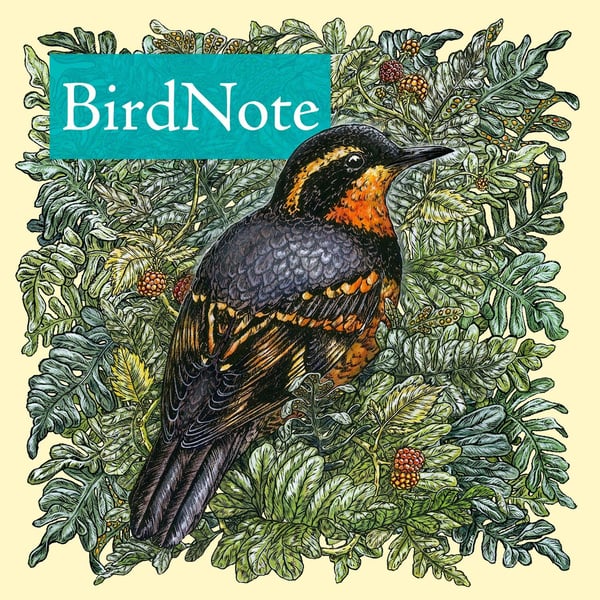The Beauty of Webbed Feet
BirdNote Daily
BirdNote
4.6 • 1.2K Ratings
🗓️ 19 January 2025
⏱️ 2 minutes
🧾️ Download transcript
Summary
Transcript
Click on a timestamp to play from that location
| 0:00.0 | This is bird note. |
| 0:07.6 | Webbed feet are ideal for birds that swim, on the water's surface or under. |
| 0:13.3 | In fact, there's such a nifty adaptation that they evolved independently in several bird |
| 0:19.3 | groups. |
| 0:21.6 | Ducks and geese have them, as do gulls, cormorants, loons, pelicans, penguins, puffins, and boobies. |
| 0:28.6 | Experiments suggest that a triangular webbed foot is beautifully designed to propel a bird or other creature through the water. |
| 0:39.8 | The toes and webs spread out as the bird pushes its foot backward. Then, as the bird pulls its foot forward, the toes fold together |
| 0:46.2 | to minimize resistance. And many birds have mastered a stroke that any human swimmer might envy. |
| 0:53.2 | A bird may lift its foot away from its body on the forward stroke, |
| 0:57.0 | actually giving itself a little extra lift and speed. |
| 1:03.0 | 400 different species of birds have webbed feet, |
| 1:06.0 | and a parallel adaptation shows up in other creatures that spend time in the water, |
| 1:11.3 | like otters, frogs, and salamanders. |
| 1:14.5 | It's clear that webbed feet have been a big evolutionary hit, |
| 1:19.7 | regardless of who's wearing them. |
| 1:24.2 | For Bird Note, I'm Michael Stein. |
Please login to see the full transcript.
Disclaimer: The podcast and artwork embedded on this page are from BirdNote, and are the property of its owner and not affiliated with or endorsed by Tapesearch.
Generated transcripts are the property of BirdNote and are distributed freely under the Fair Use doctrine. Transcripts generated by Tapesearch are not guaranteed to be accurate.
Copyright © Tapesearch 2025.

